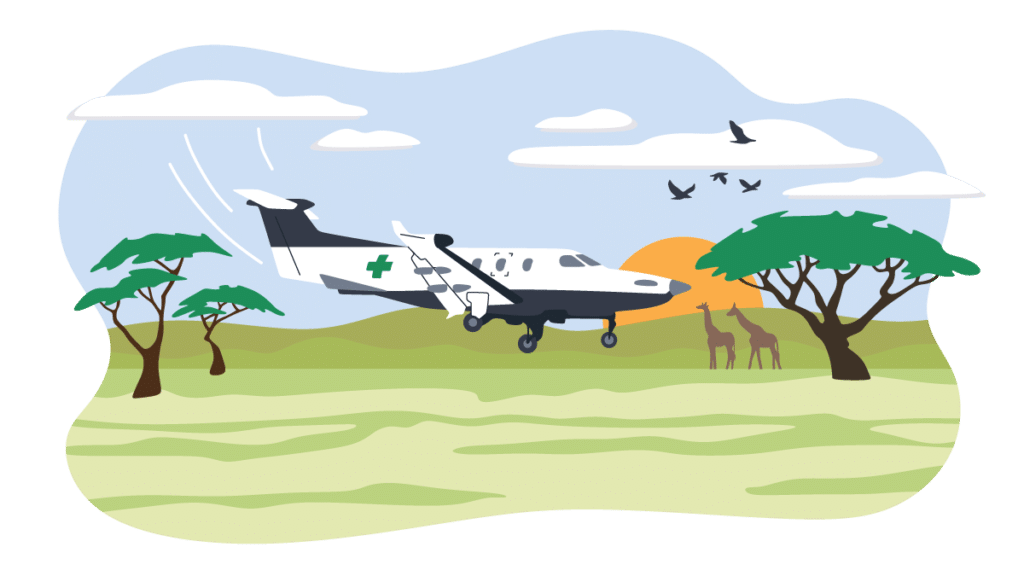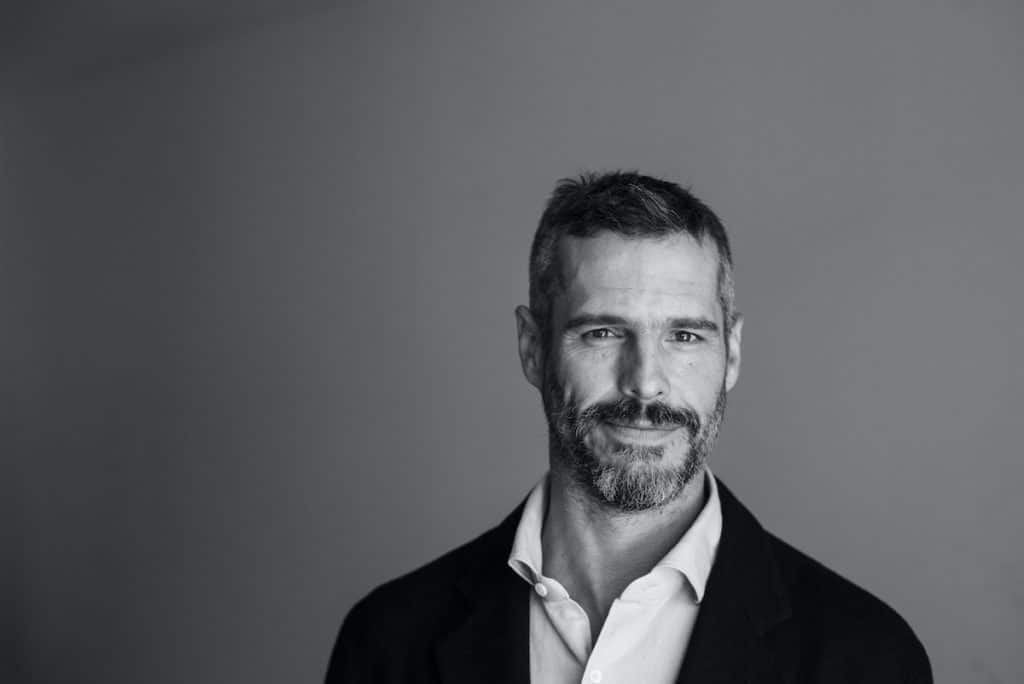The Relationship Between Health and Community

In his role as head of the NHS between 2000-2006, Lord Nigel Crisp noticed how often doctors returned from placements overseas with a renewed spark. “I recall one radiologist who spent time in Africa saying to me, ‘I remembered why I wanted to be a doctor,’” Lord Crisp says. “She had no other health professionals to rely on where she was. She had to go back to first principles to make the right decisions.”
“When I visited countries like this myself, I realised it wasn’t just that these experiences were positive for our doctors, but that we actually had an enormous amount to learn from healthcare workers in places like Africa,” Lord Crisp explains. “There was a sense of realising that we didn’t have to do things the way we had always done them in the UK.”
This insight led Lord Crisp to encourage partnerships between hospitals and institutions in the UK and those in Africa, India, Pakistan and elsewhere. It also led to the publication of his first book, Turning the world upside down—the search for global health in the 21st century (2010). The book was described as being “a decade before its time” in showing what could be learned from poorer countries about health, and in its investigation of how health could be improved in an interconnected, interdependent world.
“I was focused on people working without resources, but also working without the vested interests we have in countries like the UK,” Lord Crisp says of this first book. “There was a lot our people could learn about doing things differently—about being open to invention and innovation.”
Today, Lord Crisp is an independent crossbench member of the House of Lords where he co-chairs the All-Party Parliamentary Group on Global Health. He also co-chairs Nursing Now, a global campaign that aims to raise the status and profile of nursing. The campaign, which involves 700 groups across 130 countries and 30,000 nurses, aims to empower nurses in their role at the centre of healthcare.
Lord Crisp’s latest book, just out this year, is Health is made at home, hospitals are for repairs. Here, Lord Crisp addresses new questions about the relationship between health and community, emphasising the core role of nurses while also exploring the importance of institutional change within families, schools and workplaces that can create the conditions for health around the world.
Q&A with Lord Nigel Crisp
We sat down with Lord Crisp to find out whether his thinking about global health had changed in the wake of COVID-19. We also discussed the long-term challenges facing healthcare professionals, along with new opportunities for change through digital innovation, and the way new attitudes to community care have the potential to transform health globally.
We probably think of COVID as the greatest global health challenge facing us today, but beyond the pandemic, what do you see as our biggest need for better global health?
“The biggest shortage in global health is people. Money is important, but there are still a billion people around the world who don’t have access to a healthcare worker. There are still people who die for very preventable reasons. So health workers with almost any level of knowledge are extraordinarily valuable.
“I believe nurses are going to play a much bigger role in the future. Our assessments here in the UK are that nurses can do 80% of what doctors do in primary care. I think we’re increasingly going to see primary care run by nurses, with doctors available on Zoom or other platforms.
“The third big issue is to create the conditions for health, which is actually about creating communities in which people can be healthy. That’s about the role of families, employers, schools and community leaders. All these things have a massive impact on health.”
What are some of the other practical changes we could make, globally or even locally, that would have a positive impact on health?
“One key area to consider is the way we organise staffing, with health professionals all engaged in separate regimes and protocols. There are times we need to ask ourselves: How are we going to work together to make change happen? In some communities we see a practice called ‘task-sharing’, where nurses are engaged in work that doctors used to be doing, and other people are doing things that nurses used to be doing.
“Community health workers in Africa are an interesting example of this. These are typically village women who are trained to do a small number of things, and do them well. While they have a specific task, they understand their own culture and the habits of the people around them. They know how to talk to people, and they understand why people can be resistant to change.
“The same applies in communities elsewhere. If you’re addicted to drugs in New York, for example, living on the streets, there’s a culture and a way of doing things. Healthcare models in these New York communities have actually been created based on examples from Africa.’
“A related issue is considering how people within communities can support one another.
“In Southern Africa, for example, the mothers2mothers program involves women who have HIV working as mentors to HIV positive pregnant women, making sure they do all the things they need to do so that they stay healthy and don’t pass HIV on to their children.
“It’s been very successful. The use of community health workers to deliver immunisation programs against tropical diseases is another example.
“In countries like Australia and the UK, healthcare is covered by a state system, with a small amount of private medicine, but it doesn’t have to be like that. Programs like these recognise that there’s a contribution other people can make. We can learn from these examples.
“Another key opportunity for change is to recognise that health isn’t divorced from areas like education or employment. It’s a continuum. Too often we think about health as simply healthcare—a service that we pay for. But health is actually connected to the rest of our lives.
“An interesting example of this thinking comes from Bangladesh, where an organisation called BRAC was set up to support people living in poverty. While it wasn’t actually a health organisation, it made health one of its key themes, and linked health to education. They worked to empower women through programs like providing microfinance loans and setting up a university. As a result they’ve seen big improvements in how women have been able to look after their children.”
What are the biggest obstacles to applying this type of thinking in countries like Australia or the UK? How do we overcome these obstacles?
“The biggest change to be made is in people’s mindset and their willingness to see things differently. I think some of this will change with COVID, actually. We’re seeing people within communities doing more, there’s more volunteering, and more looking after our neighbours through simple things like collecting people’s prescriptions.
“There is resistance, but people are starting to change their attitudes. We’re starting to see people getting serious about the role that employers play in health, the role the nurses play in health, and so on.
“But we still need huge amounts of innovation and creativity. It’s a willingness to embrace that, to be open to change, and to recognise that you, as the health professional, are not in this alone. Health is not entirely your responsibility.”
Your latest book, Health is made at home, hospitals are for repairs, deals with these questions in depth. Can you talk more about how you envision the relationship between health and the wider community?
“The simple line is that health systems simply can’t deal with today’s health problems by themselves. The big diseases we suffer from, particularly in rich countries, are what are called noncommunicable diseases. Diabetes, heart disease, cancers and other long-term conditions.
“These are not things that kill you instantly and they’re not infectious diseases—they’re linked to lifestyles. They’re linked to loneliness. We know that if you become socially isolated, this can lead on to dementia. We know stress can have a really big physical impact on people’s lives. Other factors like pollution, poverty and addiction are also obviously very destructive.
“All these things aggravate the conditions that then end up in the health system, but the health system can’t do anything about them, apart from offer repairs.
“The people who can tackle the causes of these health issues are your family, your parents, schools, employers and communities—all institutions. We need to support these people and institutions so they can do the things they know need doing. It’s about driving much more care into the community.”
Is there a role for technology in fast-tracking this kind of change?
“As technology develops, we’ll see many more things that are currently done in institutions and hospitals taking place in the community. Many more tests, for example, will be done on handheld machines, or via Zoom.
“This represents a real shift of care into the community, but also a real shift of recognition that actually, doctors and nurses just pick up the pieces. If you’re going to make a difference to people’s health, you’ve got to do something about tackling stress, loneliness, addictions, air pollution, poverty, and so on. Again, this is a big change in mindset, particularly for governments.”
So how do we mobilise the community? Where does this change begin?
“I’ve identified 10 particular policies that need to change, none of which are about health. They’re about creating a healthy society.
“To begin with, frankly, if you’re going to improve health, you better do something about housing. Another factor is the focus in schools on academic achievement, as opposed to vocational training or practical skills. Separating people into academic successes and failures can end up causing problems later in life. It’s about not pushing everyone through the same door.
“These are big societal changes. They’ve got nothing to do with health services, and that’s my point. Health is made at home. Of course, we need hospitals for the repairs, but if we’re going to tackle health, we need to tackle it at the levels where people live, work and learn.”
Do you have a message for healthcare professionals about this future that you see?
“My message, particularly for nurses, is to embrace the holistic view they already have. Nurses know they’re part of the community they serve. They know the culture and they’re better able to persuade people to do things that benefit them. With these long-term conditions we’re facing, what we need are better ways to manage diseases over 15 or 20 years, alongside the interventions offered by the best doctors and scientists.
“I think nurses are going to have a stronger role in the future. All over the world now, nurses are better educated than ever before. They’re pushing the boundaries and wanting to make change, wanting to make things happen.
“Money is of course important, but we sometimes talk about global health as if the only issue was investment—investment in cures and treatments, as opposed to investment in the things that create health.
“In the end it’s about more than prevention. It’s the idea of creating the conditions in which we can be healthy so we end up with resilient, confident, strong people. That’s what health is about—it’s a state of physical, social and psychological wellbeing.”



